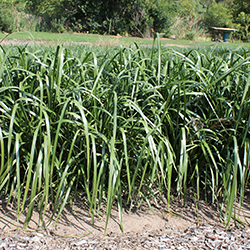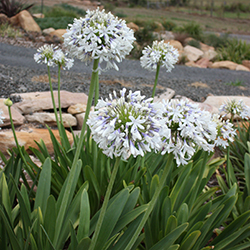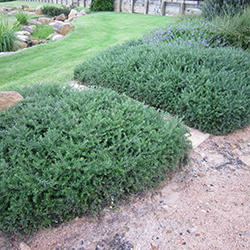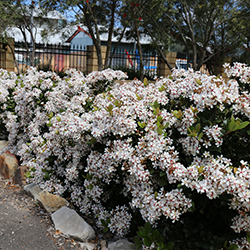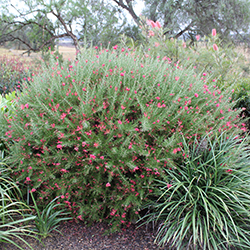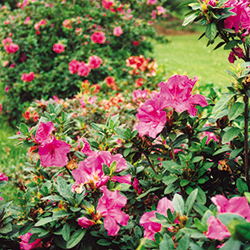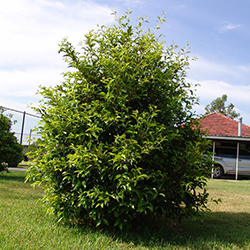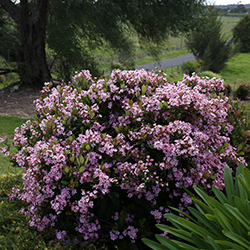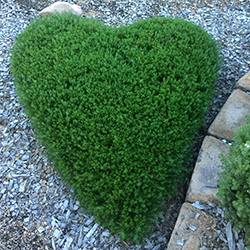By Kate Wall
Landscaping differs from gardening in a few ways, one of which is about creating a certain look. Plants are chosen to create the desired affect, whereas gardening usually starts with tending to a collection of plants. Often but not always, landscaping is applied to large gardens and easy care plants are required for mass planting to achieve the desired look.
Landscapers will have a catalogue of preferred plants, chosen for their effectiveness and their hardiness. These plants are reliable performers giving greater predictability of the outcome of the garden design and also predictable maintenance requirements.
For the home gardener, these reliable and predictable plants can form the backbone to an easy care garden, allowing the gardener to experiment with other plants within a reliable garden framework. Landscaping plants are ideally suited to mass planting in large gardens and for reliable low maintenance gardens.
Landscaping plants can be selected to suit almost any situation and to create almost any desired look, from formal to native, to grassland or flowering gardens. Landscaping plants are often those which have been selectively bred for improved growth habits such as compact size, increased disease resistance or increased flowering. This will provide greater uniformity and predictability within a mass planting, and also allows the garden designer to make more specific plant choices with regard to the features of the plants selected. For example selecting Tropic Cascade™ Lomandra hystrix ‘LHWP’ PBR with its cascading foliage, a very soft flowing look can be achieved, while most other lomandras have a very upright habit which can be more formal. Different lomandra varieties can also be selected for height or foliage colour. In this way different looks can be achieved through the use of different lomandras but all will create a grass-like feel perfect for many different garden styles. As lomandras are extremely hardy, low maintenance and exceptional erosion control plants, they are often highly desirable in mass plantings.
Plants which have been bred for greater disease resistance, such as lace bug resistant azaleas, are perfect choices for mass plantings and for reduced maintenance. Autumn Royalty™ Rhododendron hybrid ‘CONLEC’ PBR and Autumn Twist™ Rhododendron hybrid ‘CONLEP’ PBR are lace bug resistant azaleas which are tough and also repeat bloomers making them perfect landscape plants.
Lily pillies are a group of plants which have been bred extensively for highlighted features and resistance to disease including psyllid and myrtle rust resistance. While lace bug and psyllids will make plants look unsightly they are rarely fatal to the plant. Myrtle rust however is a devastating disease which can spread through and destroy a mass planting very quickly. It largely impacts on native plants including lily pillies, callistemons and other members of the Myrtaceae family. Selecting a variety which has been bred for greater myrtle rust resistance will be very important for mass planting projects. Straight and Narrow™ Syzygium australe ‘SAN01’ PBR Intended, Red Head™ Acmena smithii ‘BWNRED’ PBR and Sublime™ Acmena smithii ‘DOW30’ PBR are all highly disease resistance lily pillies with heights varying from 1m to 5m.
The desired height of the plant is another important criteria for plant selection. Whether your planting be a small or large hedge or a bank of shrubs or even a large area of ground covers, by selecting plants which grow to approximately the desired height for the space the amount of pruning will be very greatly reduced. In a mass planting ongoing pruning could become an overwhelming task which gets neglected. By selecting plants which need little pruning to maintain their desired height and shape a huge amount of maintenance can be avoided. Plants can be available in a variety of heights so always check the label first. Westringias, Lily pillies, Rhaphiolepis, callistemons and many other plants offer varieties in many different sizes so make sure you choose one that grows to the desired height and use the same variety for the entire mass planting. Heights can vary from dwarf forms which grow to only 50cm to small trees which will grow to 3 metres or more so it certainly pays to know which variety you are planting, and to keep a label in case you need to fill gaps down the track.
Varieties of plants which have been bred for reduced seed production are responsible choices for gardens near native bushland to reduce the spread of environmental weeds. It will also limit the plants become weeds in other areas of the same garden. Queen Mum™ Agapanthus orientalis ‘PMN06’ PBR and Agapanthus orientalis ‘Cloudy Days’ PBR are both excellent varieties of agapanthus with variegated white and blue flowers, low seed viability and good disease resistance, making them both highly suited to mass plantings. Queen Mum™ is significantly taller growing than ‘Cloudy Days’, allowing for different height effects to be achieved.
Similarly, Cosmic Pink™ Rhaphiolepis indica ‘RAPH02’ PBR with pink flowers and growing to 80 cm, and Cosmic White™ Rhaphiolepis indica ‘RAPH01’ PBR with white flowers and growing to 2m both make excellent landscape plants as they are very hardy, flower very well and rarely produce seed, making them a safer choice near bushland.
Dense and compact forms of plants are great for mass plantings as they are better able to crowd out weeds and create a lush and full look than will sparely growing plants. While strap leafed plants such as lomandras, dianellas and dietes immediately spring to mind for dense plantings, many of the ground covers and small shrubs can also form very dense plantings. Crimson Villea™ Grevillea rosmarinifolia ‘H16’ PBR is a very dense low growing grevillea with masses of red flowers, which will effectively block out weeds, as will some of the low growing westringias such as Low Horizon™ Westringia ‘WES06’ PBR and Mundi™ Westringia fruticosa ‘WES05’ PBR or the low growing correas such as Trixibelle™ Correa reflexa ‘COR8’ PBR.
More great suggestions for mass planting into landscapes can be found here.
<< Back to Articles Home Page Landscaping Articles Full List of Articles

